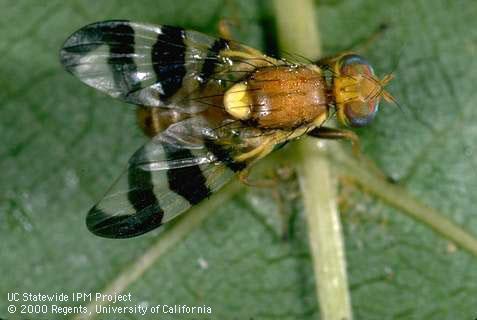 Walnut husk fly (WHF) continues to plague walnut production in many areas, often requiring multiple insecticide applications each growing season to achieve adequate control. This pest provides particular challenges to an integrated pest management program due to the nature of its life cycle (one generation per year with a long emergence period) and lack of natural enemies. As a result, best practices for management rely heavily on monitoring and insecticide treatments. Precise timing based on monitoring method and rotation of chemistries to minimize resistance risk are keys to successful long-term control of this pest.
Walnut husk fly (WHF) continues to plague walnut production in many areas, often requiring multiple insecticide applications each growing season to achieve adequate control. This pest provides particular challenges to an integrated pest management program due to the nature of its life cycle (one generation per year with a long emergence period) and lack of natural enemies. As a result, best practices for management rely heavily on monitoring and insecticide treatments. Precise timing based on monitoring method and rotation of chemistries to minimize resistance risk are keys to successful long-term control of this pest.
The WHF Biology, Monitoring, and Spray Timing article has been recently updated, and now includes a comprehensive insecticide efficacy data table from the last 10 years. Make sure to bookmark it for future reference!


Leave a Reply